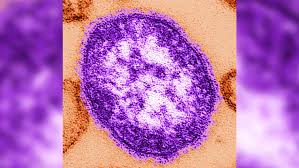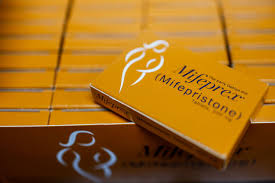Manipal Hospitals conducts Asia Pacific’s first-ever OSIA implantation with a skull-base surgery to restore hearing functions
Manipal Hospital Old Airport Road conducts Asia’s first two consecutive OSIA implantation surgeries (osseointegrated steady-state implant) saved two patients who were experiencing hearing loss through this rare surgery and helped them restore their hearing functions Othman
Manipal Hospital Old Airport Road conducts Asia’s first two consecutive OSIA implantation surgeries (osseointegrated steady-state implant) saved two patients who were experiencing hearing loss through this rare surgery and helped them restore their hearing functions
Othman Muhammed, a 28 year old patient from Iraq was experiencing progressive hearing loss and facial paralysis. Abdul’s facial paralysis had a long history. While in Iraq, he visited various local doctors with complaints of severe pain and discharge from the right ear, for many years. Finally, Othman’s family travelled to India for a second opinion. Here, they met Dr. Sampath Prasad Rao, Consultant – Ear, Nose & Throat, Skull Base Surgery, Manipal Hospital Old Airport Road and team. They performed a surgical intervention that helped restore the patient’s hearing and facial functions.
“When Othman and his family approached me, they said that Othman had been experiencing progressive hearing loss in the right ear for the past 12 years. He had undergone surgery for cholesteotoma in 2010 in Iraq, following which he developed grade VI facial nerve paralysis. Follow-up after the surgery revealed persistent disease in the dee per parts of hi affected ear (temporal bone which houses the middle and inner ear). Surgical treatment options for the same were not available in Iraq,”said Dr. Sampath.
Facial nerve palsy repair was first attempted in 2014, with a temporalis sling to the upper lip, the lower lip, and the modiolus. In 2017, another surgery was attempted to attach the temporalis sling to the modiolus, within consistent results.
A detailed clinical study revealed a grade 3 retraction pocket of the tympanic membrane, and grade VI facial paralysis. After a complete evaluation, including audiological tests and scans, the diagnosis of Petrous Bone Cholesteatoma on the right side was derived.
“Petrous bone cholesteatoma is a type of cholesteatoma (an abnormal skin growth or skin cyst trapped behind the eardrum, or the bone behind the ear) that is located in the middle part of the temporal bone. Cholesteatoma is defined as a skin-lined cystic lesion that usually develops at the margin of the tympanic membrane, grows aggressively, and often erodes the bone. Due to its bacterial retention property, it gets infected very frequently. A petrous bone cholesteatoma grows aggressively into the bone, resulting in hearing loss, as it destroys the middle ear structures, and the inner ear (cochlea),severely affecting the hearing,” explained Dr. Rao. “With bone erosion properties, cholesteatoma erodes the facial nerve canal which is closely related to the temporal bone and causes facial paralysis.”
To remove the Petrous Bone Cholesteatoma, the patient underwent a right-sided transotic approach with infratemporal fossa approach type B extension (Need surgery which clears the disease from all parts of the ear making it disease free to simplify this).This was followed by blind sac closure of EAC (Cosmetic closure of the ear canal to make it disease free), and facial restoration surgery, including upper lid Gold Weight Lid Loading Implant, Lateral Canthopexy ,and Facial Micro fat Grafting.
Asia Pacific’s first-ever OSIA implantation was done for this patient for restoration of hearing. This also happens to be AsiaPacific’s first OSIA implant to be done concurrently with a skull-base surgery. Thanks to the comprehensive treatment provided to Othman, he was relieved of his symptoms and sent back home as a new person. He is regular in follow-ups with the doctor, and his determination is an inspiration to all those patients who lose hope due to hearing loss and facial palsy.
In the 2nd case, Mr. Vikas Chandra a 51 year old from Dubai, who was suffering from vestibular schwannoma, approached Dr. Rao. Vestibular schwannoma is a tumor that arises from the vestibulocochlear nerve or the balance nerve around the ear that goes to the brain. When Dr. Rao examined him, he was already experiencing some bit of hearing loss. The tumor arises from the nerve that comes from the cochlea which helps in keeping balance of the body and also helps in hearing. Usually, after surgically removing the tumor he would have completely lost his hearing on
one side. The earlier option for resuscitation or rehabilitation of hearing in such cases would have Bone-anchored hearing implant. The Bone-anchored hearing implant is placed inside the skull; it has a processor which is connected under the skin.
He experienced severe giddiness and nausea following an RTA(Road Traffic Accident). To get this issue sorted out, he had visited multiple doctors in Dubai, but in vain. Later, an MRI showed a tumor in his head. This was ascertained to be responsible for the giddiness. Now that the cause was identified, the next step was to decide on the treatment. That was very difficult as the location and size of the tumor was very complicated. It needed a skilled surgeon to remove it.
The search ended when they met Dr. Sampath Chandra Prasad Rao in Bangalore. On further evaluation, he was diagnosed with hearing loss and poor speech discrimination. Another MRI revealed a heterogeneously enhancing solid tumor of 4X3X4cm size with cystic areas in the left CPA (Cerebello pontine angle, a part within the brain).The tumor was seen widening the fundus of left IAM (Internal Auditory Meatus, a portion of the inner ear),which is a feature highly suggestive of vestibular schwannoma. Now the concern was not just removal of the tumor but also restoration of hearing.
OSIA implant is a new portfolio of implants in the same lineage of a bone-anchored implant. In a normal bone-anchored hearing implant, all the components of the machine are outside the skin and only the implant goes inside the bone. In OSIA, most of the components of the machine, except the receiver, goes under the skin. This is a big leap in technology as far as OSIA is concerned. With the help of OSIA, the doctor was aiming to restore hearing. Cochlear OSIA implant is an implant that works bypassing the damaged areas of the outer ear and the middle ear and sends sound signals to the inner ear.
“Single-sided deafness, which needed to be sorted out through this surgery, had multiple rehabilitation options, such as hearing aids and Bone-anchored hearing aids. But to be back on my normal routine and to get back to my normal life we had to be sure of what we opted for. The latest technology Active Piezoelectric stimulated Osseo Integrated Implants (OSIA) was the one we decided on,” recalls Mr.
Vikas Chandra. This paved the way for Asia Pacific’s second OSIA implantation to be undertaken by Dr. Sampath Chandra Prasad Rao.
For the patient, the Translabyrinthine approach for excision of the giant Vestibular Schwannoma with simultaneous ipsilateral OSIA Implantation for hearing restoration, was adopted. And the switch-on was done three weeks after the surgery. Upon switch-on of the OSIA implant, the patient was able to hear normally with good speech discrimination, in both quiet and noisy environments.
Dr Sampath and team had performed two more Osia implantation recently on 46-year-old Mr Prajeeth from Kerala and Mr Shivanand Havalgi 39-year-old from Bijapur. “When my patients are healed and headed towards leading a normal life, it gives me great joy,” added Dr. Sampath.






